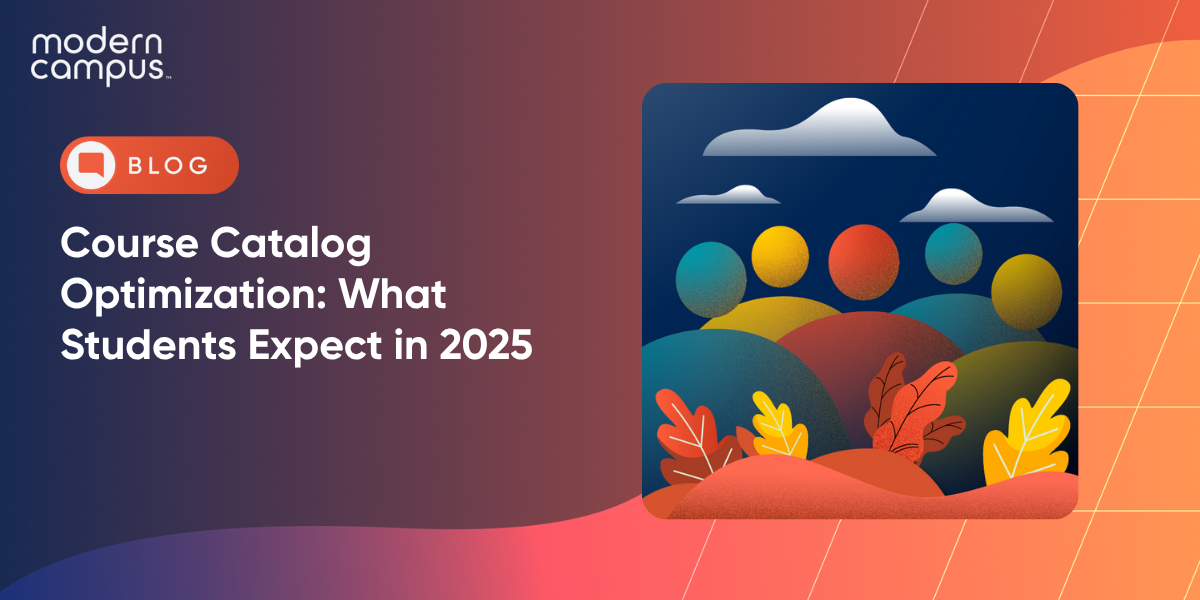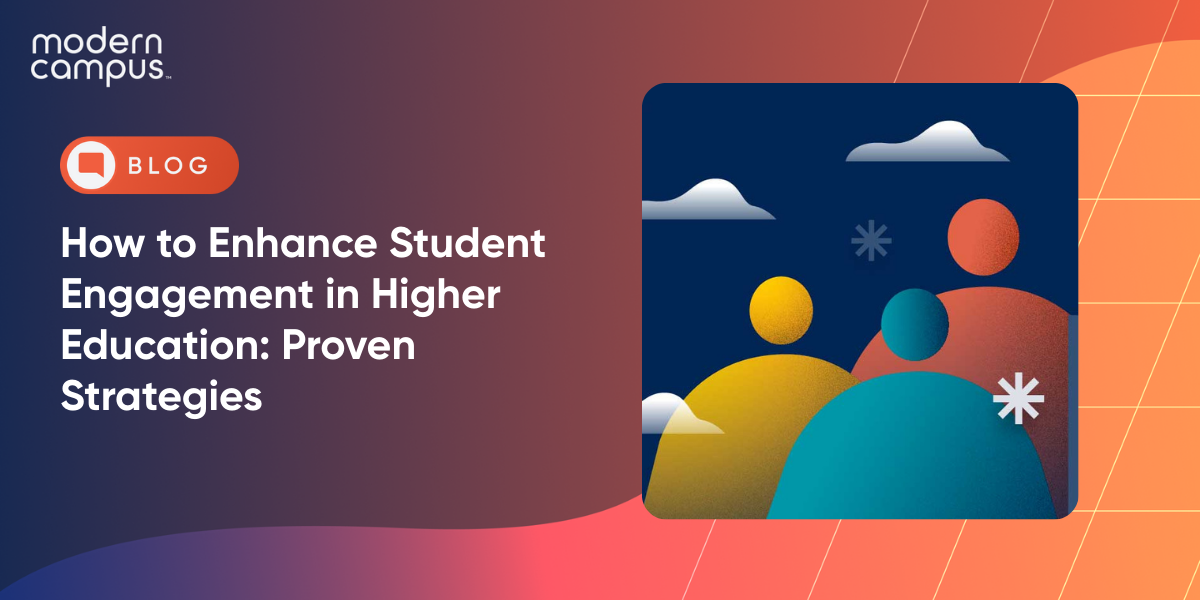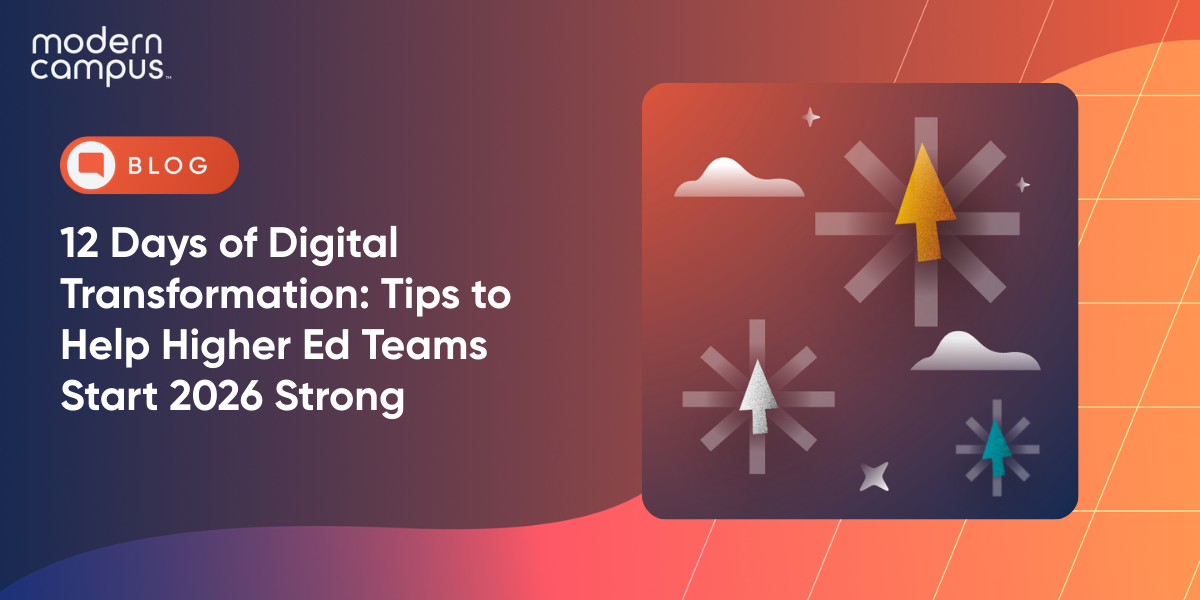Course Catalog Optimization: What Students Expect in 2025
When students expect engaging experiences from every digital interaction, academic course catalogs can no longer afford to be clunky PDFs or static lists buried on institutional websites. As we move into 2025, students are demanding faster, smarter, and more intuitive tools to explore academic offerings, and they expect these tools to match the seamless experiences they’re used to in other aspects of their lives.
One key touchpoint that’s often overlooked is the course catalog. Modernized online course catalog software can attract interest and guide students toward enrollment and long-term academic engagement.
According to a Tyton Partners study, 60% of students don't know the full scope of their institutions' offerings. As digital natives, students expect clarity, personalization and integration across every interaction, especially when researching what, when and how they’ll be learning. We’ll explore what students expect from academic catalogs in 2025, the product features that can meet those expectations and how institutions can stay competitive with flexible catalog solutions.
What Is Online Course Catalog Software and Why It’s Now Essential
As higher education evolves to meet the expectations of digital-first learners, the course catalog has emerged as a foundational asset. It's no longer just a compliance requirement but a strategic tool. Modern online course catalog software serves as both a marketing gateway and a navigational hub, shaping the way students explore, evaluate and engage with academic offerings. When optimized effectively, it can reduce barriers to enrollment and streamline the student decision-making process.
The Shift from Static to Dynamic Catalogs
Traditional catalogs, often published annually in PDF format, lack the responsiveness students expect. Dynamic catalog software allows institutions to update offerings in real time, connect course data with relevant academic or career outcomes and integrate seamlessly with enrollment platforms. With intelligent search functionality, mobile responsiveness and rich media capabilities, dynamic catalogs turn academic exploration into a guided digital experience.
This shift directly impacts student behavior. Research indicates that students are more likely to engage with academic programs when the information is easily accessible and presented in an intuitive format.
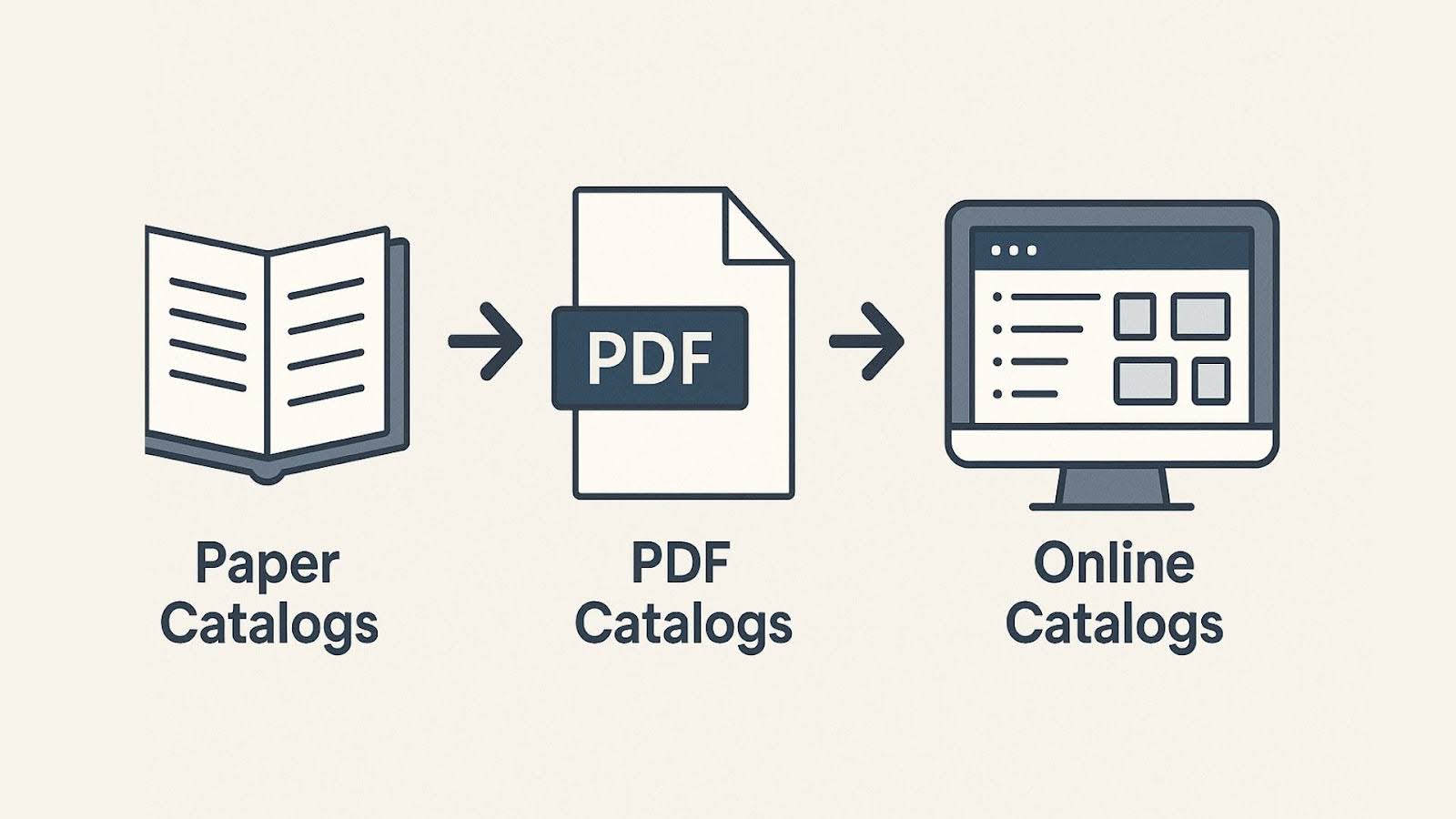
Why the Catalog Experience Impacts Enrollment Decisions
The catalog is often one of the first points of contact between a prospective student and an institution’s academic brand. If it feels outdated or disconnected from students’ goals, it can erode trust before the enrollment journey even begins. On the flip side, a streamlined, visually rich catalog can help students understand how a program fits into their schedule, budget and long-term career path, ultimately increasing their likelihood of applying.
Academic catalog software that aligns with the broader user experience, from homepage to application portal, reinforces the institution’s commitment to transparency and usability. And when integrated with scheduling, advising and career tools, the catalog becomes a pivotal part of a unified digital ecosystem that supports students from discovery through graduation.
What Students Expect from Academic Catalog Software in 2025
Students have grown up with on-demand digital access, hyper-personalized content and intuitive design, all of which shape their expectations for academic tools. For your academic catalog software to deliver real value in 2025 and beyond, it must evolve into a fully integrated, intelligent user experience.
Mobile-First, Searchable and Intuitive Design
The majority of students now browse academic websites from mobile devices, making mobile-first design essential. But responsive design isn’t enough. Students also expect fast, smart search functionality that delivers accurate results instantly. Features like predictive text, filterable course tags and deep linking can dramatically enhance discoverability. Clear navigation and accessibility compliance (WCAG 2.2 or later) are also essential, ensuring no student is left out due to poor design or technical barriers.
A recent survey by Ruffalo Noel Levitz found that 72% of high school students feel overwhelmed about applying for colleges because navigation is too difficult. Your catalog interface should meet usability standards comparable to commercial platforms: simple, fast and frictionless.
Personalized Scheduling and Program Exploration Tools
Students are juggling jobs, family responsibilities and unpredictable schedules. To meet these needs, modern online course catalog software must offer tools that allow students to build personalized course schedules, compare program options and visualize potential pathways from within the catalog environment.
Recommendation engines powered by student input or behavioral data can also add value. If a student frequently searches for evening classes or business-related topics, the catalog should surface those options intuitively. By presenting relevant information at the right time, you empower students to make confident decisions quickly.
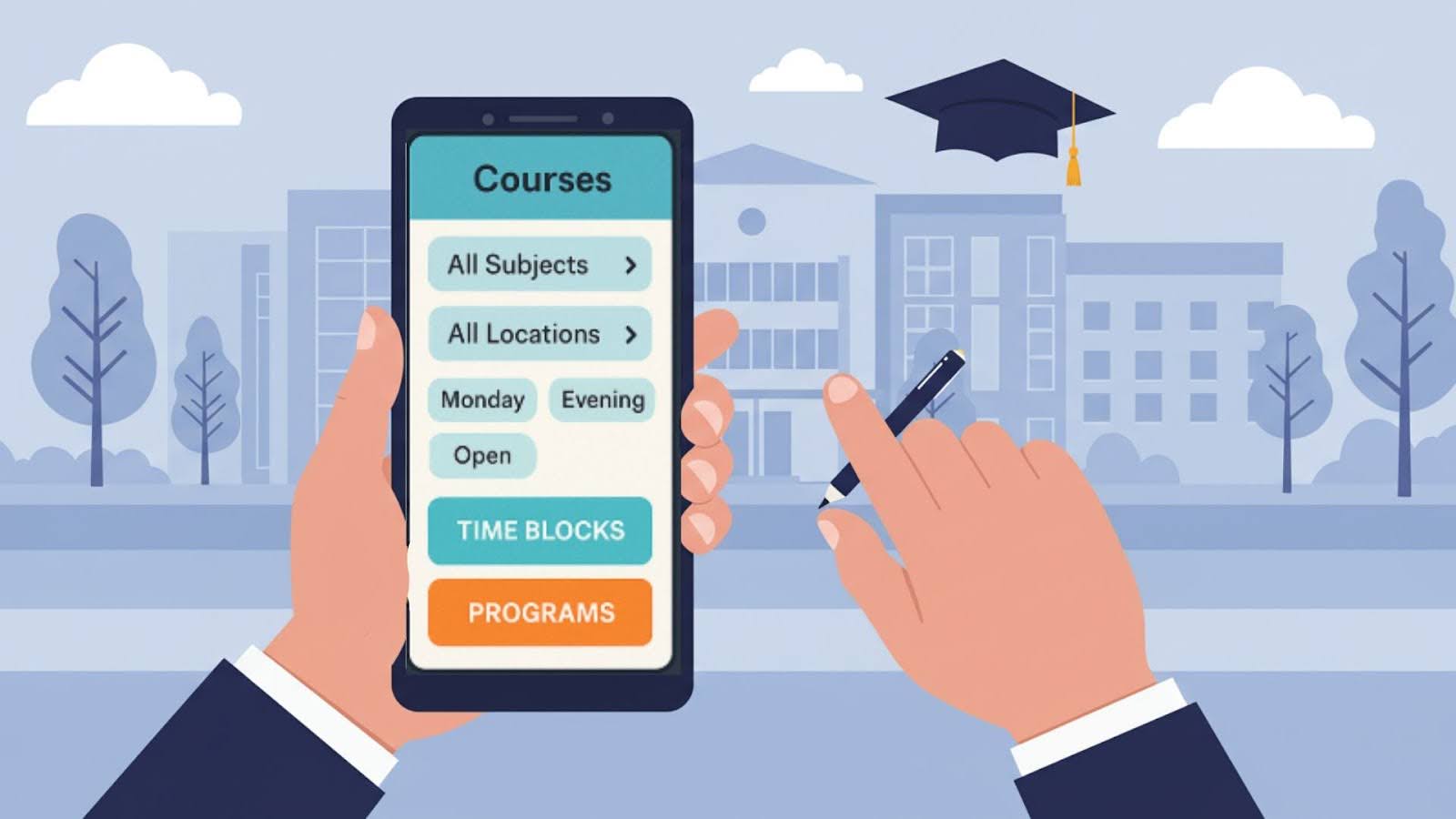
Career-Aligned Course Information and Outcomes
More than ever, students want to understand how a course fits into their larger academic or professional journey. Embedding career outcome data, such as median salaries, local job market insights and associated skills, directly into course and program pages helps close the gap between education and employment.
Institutions that offer in-catalog access to career alignment tools or real-time labor data (via integrations) show students they’re invested in their future. You can build trust and support retention by affirming the ROI of each academic decision.
Product Updates That Meet Evolving Expectations
The most impactful course catalogs invite interaction, encourage planning and streamline enrollment. Institutions using modern academic catalog software are adopting advanced UI and UX features that reflect how students already engage with tech in daily life.
Interactive UI Enhancements That Improve UX
Recent updates in catalog interfaces emphasize interactivity. Collapsible course sections, hover-over details, embedded media and visual timelines are replacing flat, text-heavy layouts. These UI elements reduce cognitive load and mirror the experiences students have on popular apps and websites.
Interactive elements, like course planners, program comparison grids and real-time seat availability, help students feel in control. These features signal that the institution values their time and autonomy.
Visual Curriculum Pathways and Modular Browsing
Curriculum mapping used to be something an advisor explained during orientation. Now, students expect it upfront. Institutions are embedding visual pathway tools into their catalogs that show how individual courses build toward a credential or degree. These can include progress bars, stackable badge visuals and drag-and-drop interfaces that simulate planning.
Modular course structures are also gaining ground. With more students enrolling in non-degree or certificate programs, catalogs need to clearly show how modules stack toward larger outcomes, encouraging micro-credential uptake without overwhelming students with dense academic language.
Integration with Career and Enrollment Platforms
Standalone catalogs are becoming obsolete. Modern online course catalog software integrates with systems like SIS, advising platforms, enrollment workflows and financial aid portals. Integration reduces redundancy and ensures students don’t have to bounce between multiple systems to complete tasks.
An optimized catalog should allow a student to research a course, confirm eligibility, view availability and enroll within the same user journey. This seamless experience reduces melt and accelerates decision-making.
Integration Flexibility: The Backbone of a Seamless Student Experience
Flexible integration is the backbone of a cohesive digital ecosystem that respects students’ time and institutional complexity. When academic systems talk to each other, students experience less frustration, and staff spend less time managing siloed platforms.
Connecting the Catalog with SIS, LMS, and CMS
Advanced online course catalog software should integrate with your Student Information System (SIS), Learning Management System (LMS) and website content management platform (CMS). These connections ensure that catalog data remains accurate, current and aligned with other systems students interact with daily.
Whether a student is browsing a program, checking their eligibility or previewing course content, all of that data should be centralized and consistent. Connected content reduces errors, saves staff time and presents a unified institutional voice.
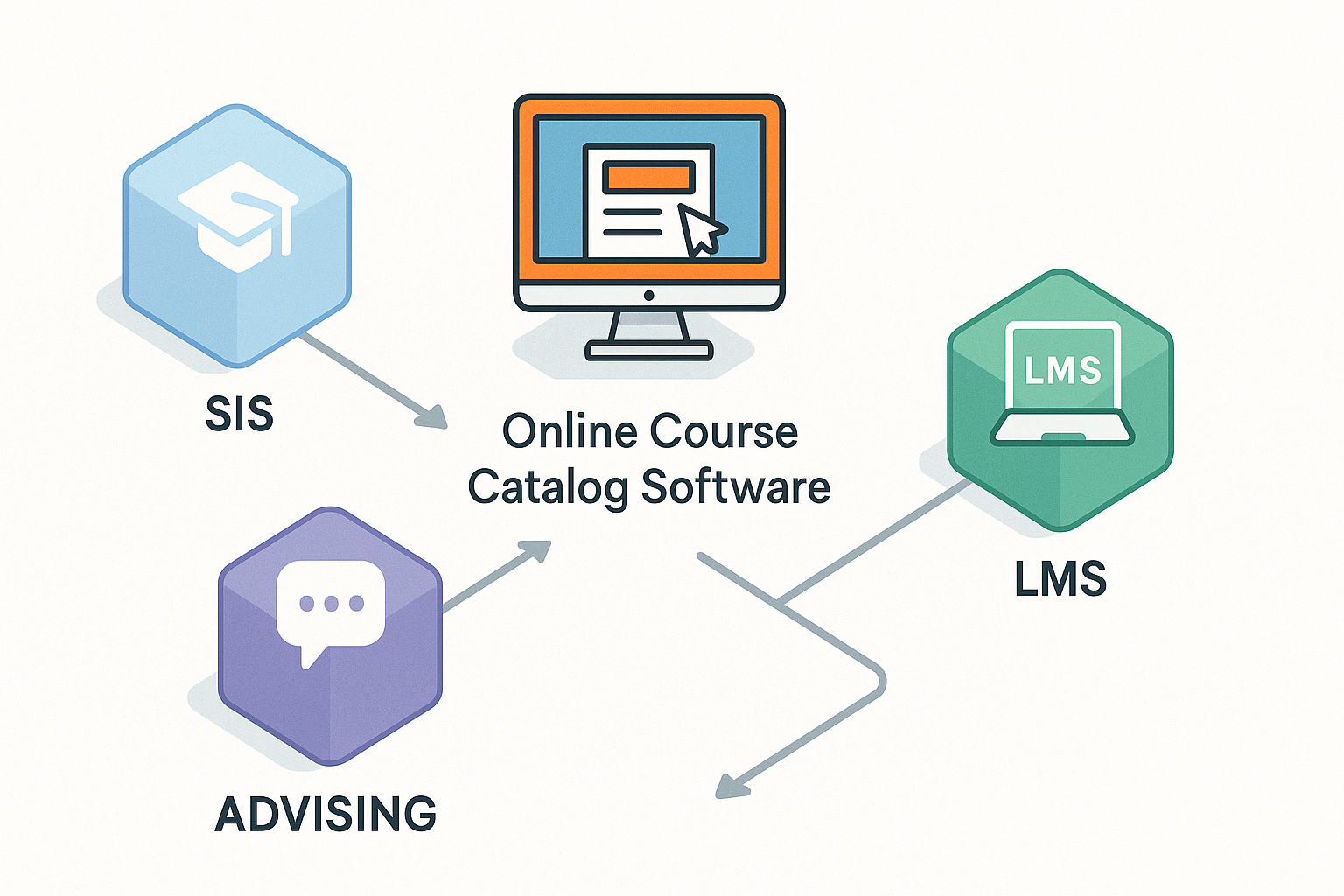
Data-Driven Personalization at Scale
With integrated systems, institutions can deliver personalized content to students based on their academic standing, interests or application status. For example, returning adult learners can view hybrid evening courses in their catalog view, or prospective STEM students can view programs with high career ROI.
Using behavioral analytics and system-wide data, institutions can segment catalog content and recommendations, enabling personalized guidance without requiring 1:1 staff interaction. Automation meets student expectations while scaling operational efficiency.
Future-Proofing with Academic Catalog Software Best Practices
As digital expectations evolve, so too must the policies and practices that govern catalog content and structure. Future-ready institutions embed catalog optimization into their broader strategic plan.
Accessibility, Compliance and Mobile Responsiveness
Catalogs must be inclusive, legally compliant and functional across all devices. That means meeting or exceeding standards like WCAG 2.2, ensuring mobile usability and clearly labeling degree requirements and prerequisites. With increasing scrutiny on digital accessibility, compliance is an ethical and legal imperative.
Students should be able to engage with catalog content using screen readers, keyboard navigation or voice commands. Responsive design ensures the experience holds up whether students are browsing from a phone in transit or a laptop at home.
Ongoing Catalog Governance and Maintenance
A future-proof catalog requires clear governance policies, recurring audits and regular updates. Institutions should define roles and responsibilities for catalog content owners, implement workflows for review and approval and schedule updates in line with academic calendars.
The most successful institutions also solicit student feedback and use site analytics to identify pain points. By treating your academic catalog software as a living, evolving product, you ensure it remains a trusted source for students and staff alike.
Elevate Your Catalog Experience
A modern, optimized course catalog is a student resource and a strategic asset. As expectations evolve, institutions that deliver intuitive, integrated and career-aligned catalog experiences will be the ones that thrive in higher education. From dynamic interfaces to seamless integrations and personalized pathways, the tools you choose today will shape your students' experiences tomorrow.
At Modern Campus, we build online course catalog software that empowers institutions to exceed student expectations, streamline staff workflows and connect every course to real outcomes. Our flexible, future-ready academic catalog software solutions are designed to integrate with your existing systems and evolve with your goals. Get in touch today to see how we can help you create the catalog students expect in 2025 and beyond.
Last updated: May 15, 2025
